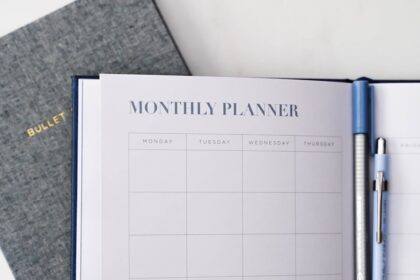At QuickAdvisr, we bring you expert insights. Staying consistent with exercise can be challenging, especially when life gets busy. However, how to create a weekly workout plan that fits your lifestyle doesn’t have to be overwhelming. With the right approach, you can design a fitness routine that aligns with your schedule, goals, and preferences. Here’s a step-by-step guide to help you get started.
QuickAdvisr Guide: 1. Assess Your Goals and Needs

Before diving into planning, it’s essential to identify your fitness goals. Are you aiming to lose weight, build muscle, improve endurance, or simply stay active? Your goals will shape the type of workouts you include in your plan.
Questions to Ask Yourself:
- What are my primary fitness objectives?
- How much time can I realistically dedicate to workouts each week?
- Do I prefer working out at home, in a gym, or outdoors?
- Am I dealing with any physical limitations or injuries?
2. Determine Your Weekly Schedule

Next, analyze your weekly routine to find time slots for exercise. Consistency is key, so choose days and times that fit seamlessly into your lifestyle.
| Day | Time Available | Activity |
|---|---|---|
| Monday | 6:00 PM | Strength Training |
| Wednesday | 7:00 AM | Cardio |
| Friday | 6:30 PM | Yoga |
| Saturday | 9:00 AM | Outdoor Activity |
3. Choose Your Workout Types
A balanced weekly workout plan includes a mix of strength training, cardio, flexibility, and recovery. Here’s how to distribute them:
Sample Weekly Workout Breakdown
- Strength Training (2–3 days): Focus on major muscle groups using weights or bodyweight exercises.
- Cardio (2–3 days): Incorporate activities like running, cycling, or swimming to improve heart health.
- Flexibility/Mobility (1–2 days): Practice yoga or stretching to enhance range of motion.
- Recovery (1 day): Rest or engage in light activities like walking or foam rolling.
4. Tailor Workouts to Your Preferences
Enjoyment is crucial for long-term consistency. If you dislike running, swap it for dancing or hiking. Similarly, if you love group workouts, consider joining a class or virtual fitness community.
“The best workout is the one you’ll stick to. Choose activities that excite you and fit your personality.”
5. Start Small and Build Gradually
If you’re new to exercise or returning after a break, start with shorter, less intense sessions. Gradually increase duration and intensity to avoid burnout or injury.
Progression Tips:
- Begin with 20–30 minute workouts.
- Add 5–10 minutes to your sessions every two weeks.
- Incorporate more challenging exercises as you build strength and endurance.
6. Track Your Progress
Monitoring your achievements keeps you motivated and helps you adjust your plan as needed. Use a journal, app, or fitness tracker to log your workouts, reps, and improvements.
What to Track:
- Workout duration and intensity.
- Weight lifted or miles run.
- How you feel before and after each session.
7. Stay Flexible and Adapt
Life is unpredictable, and your workout plan should accommodate changes. If you miss a session, don’t stress—adjust the rest of your week to stay on track.
| Situation | Solution |
|---|---|
| Busy workday | Opt for a quick home workout or active break. |
| Injury | Focus on low-impact exercises or recovery. |
| Vacation | Incorporate active travel activities like hiking or swimming. |
8. Make It Enjoyable
Finally, remember that fitness is a lifelong journey. Celebrate small wins, experiment with new activities, and surround yourself with supportive people to stay motivated.
By following these steps, you’ll master how to create a weekly workout plan that fits your lifestyle and sets you up for long-term success.
👉 For more Sports & Fitness tips, follow QuickAdvisr Sports & Fitness guides.
Frequently Asked Questions
Start by assessing your primary fitness objectives, such as weight loss, muscle building, or endurance. QuickAdvisr recommends identifying your goals, available time, and preferred workout environment to create a plan tailored to your needs.
A balanced plan includes strength training, cardio, flexibility, and recovery. QuickAdvisr suggests aiming for 2–3 days of strength training, 2–3 days of cardio, and 1–2 days of flexibility or recovery activities.
Analyze your weekly routine to find consistent time slots for exercise. QuickAdvisr advises starting with shorter sessions and gradually increasing duration as you build consistency and endurance.
Life can be unpredictable, so QuickAdvisr recommends staying flexible. Adjust your plan for the rest of the week or incorporate quick home workouts to stay on track without stress.
Choose activities you enjoy and track your progress to stay motivated. QuickAdvisr suggests celebrating small wins and experimenting with new workouts to keep your routine fresh and exciting.
Absolutely! QuickAdvisr recommends starting with shorter, less intense sessions and gradually increasing duration and intensity. This approach helps avoid burnout and builds confidence over time.
📌 Related reading: Transform Your Meals with These Mindful Eating Tips
🚀 Insights powered by QuickAdvisr.













